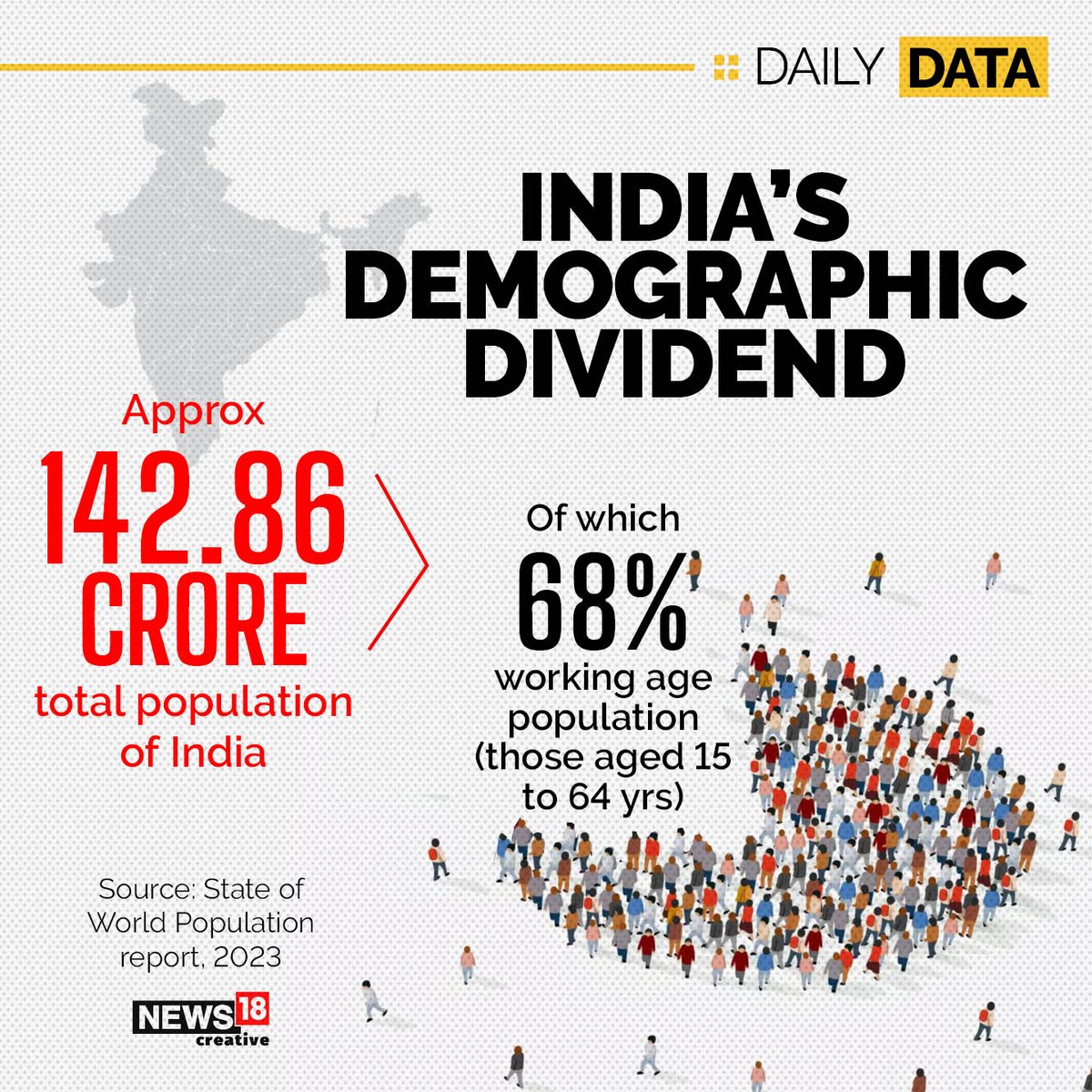From UPSC perspective, the following things are important :
Mains level: Introduction of a high-powered committee to address challenges arising from rapid population growth

Central Idea:
The article emphasizes the importance of addressing the challenges and harnessing the opportunities presented by India’s rapidly changing demographic landscape through strategic policies and investments in health, education, employment, and data infrastructure.
Key Highlights:
- Introduction of a high-powered committee to address challenges arising from rapid population growth.
- Need for interdisciplinary approach involving experts from various fields.
- Importance of data analysis and monitoring demographic trends.
- Emphasis on collaboration with stakeholders for effective policy implementation.
- Highlighting demographic shifts and their implications for economic growth.
- Focus on maximizing the demographic dividend through investments in human capital.
- Challenges in healthcare, education, and employment sectors.
- Importance of evidence-based decision making and data infrastructure.
- Collaboration with international organizations for best practices and funding opportunities.
Key Challenges:
- Limited public spending on healthcare and education.
- Persistent challenges in nutritional deprivation and access to quality education.
- Disruptions caused by the COVID-19 pandemic.
- Lack of accurate and timely demographic data.
- Need for modernization of data infrastructure and capacity building.
- Ensuring reliability and accuracy of population data.
- Bridging the gap between skill development initiatives and industry requirements.
Key Terms and Phrases:
- Demographic transition
- Population committee
- Interdisciplinary approach
- Demographic dividend
- Evidence-based policy
- Data infrastructure
- Human capital
- Skill development
- Stakeholder collaboration
- Economic growth
Case Studies and Best Practices:
- The successful implementation of the National Rural Health Mission in improving primary healthcare in rural areas.
- The Mid-Day Meal Scheme ensuring access to nutritious meals for school children, contributing to improved health and educational outcomes.
- The Aadhaar initiative in India, which has streamlined government services and facilitated targeted interventions in various sectors, including healthcare and education.
- The Pradhan Mantri Kaushal Vikas Yojana (PMKVY), a skill development initiative aimed at providing industry-relevant training to youth, enhancing their employability.
- The ASER (Annual Status of Education Report) survey providing valuable insights into the quality of education in rural India and informing policy decisions for improvement.
Key Quotes and Anecdotes:
- “India’s demographic landscape presents both opportunities and challenges for the country’s socio-economic development.”
- “Investments in health, education, and skill development are crucial to realizing India’s demographic dividend.”
- “Collaboration with international organizations can provide access to global best practices and technical expertise.”
Key Statements and Examples:
- India’s population committee aims to formulate policies addressing challenges like family planning and socio-economic development.
- The demographic dividend offers an opportunity for accelerated economic growth but requires investments in human capital.
- Limited public spending on healthcare and education underscores the need for policy prioritization in these sectors.
Key Facts and Data:
- India’s population is projected to reach 1.46 billion by 2030.
- Public spending on health has remained around 1% of GDP.
- Nearly 47% of Indian youth may lack necessary education and skills for employment by 2030.
- Over 250 million children were forced out of school due to the COVID-19 pandemic.
Critical Analysis:
- The article effectively highlights the interconnectedness of demographic factors with economic and social development.
- It underscores the importance of evidence-based policymaking and the challenges in data availability and reliability.
- The emphasis on collaboration with stakeholders and international organizations reflects a comprehensive approach to addressing demographic challenges.
Way Forward:
- Prioritize investments in health, education, and skill development.
- Modernize data infrastructure and improve data collection methodologies.
- Strengthen collaboration with stakeholders and international organizations.
- Implement policies that promote transparency, accountability, and inclusivity.
- Focus on bridging the gap between existing initiatives and industry requirements to enhance employment opportunities.
Get an IAS/IPS ranker as your 1: 1 personal mentor for UPSC 2024

